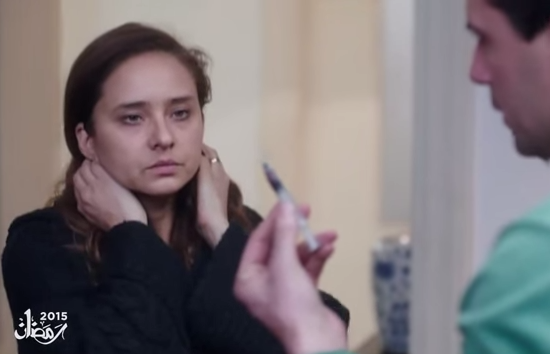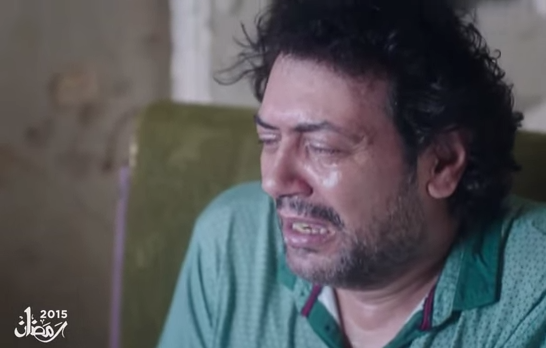
Ramadan TV show Taht El Saytara has managed to creep its way into viewers’ hearts and minds. In less than a week, it became the most talked about show this year. It is an ugly wake-up call that sheds light on one of the most pressing issues in our country. The never-before-seen details of the world of addiction agonize us, parents refuse to believe that Hania exists in real life and everyone is picking their terrified jaws off the floor.
We sat down with Dr. Adly El Sheikh, Psychiatry Specialist at Good Hope Psychiatry Clinic and Hayat Hospital to break down every single detail and question we had about the show.
The whole country is overwhelmed by ‘Taht El Saytara’. One of viewers’ most common comments is how aggressively the show portrays addiction, treatment and relapse. As a psychiatrist who has been dealing with recovering addicts for years, what do you think of the show?
It works as an excellent awareness campaign that sheds light perfectly on the matter. We don’t have programs or campaigns in Egypt that are that informative about the struggles of addiction and what it does to your life.
The show portrays addiction in its real form in a professional way, unlike the classic old movie scenes where addiction was solely about cravings, tolerance and physical dependence. It shows us another dimension – how substance abuse affects the addict’s life in general.
It also informs viewers about the treatment process. However, if I have a concern it would be that they only showed the 12-Step Program, which is crucial and one of the most successful methods of treatment due to its spiritual impact. However, there are several other methods that are just as important, yet were not mentioned, which might be misleading.
Another concern viewers seem to have is the fact that the character Hania came from a certain background and social class, and she turned her life upside down, practically lives in a dump and is addicted to a substance that doesn’t fit her previous lifestyle. Why do people subconsciously correlate between social class and the substance abused?
That is an extremely important question as whenever someone starts thinking about drugs, their minds immediately categorize different substances. It is very common to find people thinking that heroin must be different than weed or that alcohol is not as addictive as drugs as it is socially accepted. The major issue with the disease of addiction is that people blame the substance itself, when it is about the patient’s mind.
We can talk forever about how common weed is or how Tramadol has become an epidemic in Egypt, yet at the end of the day, the type of drug is not the real danger, it is the patient’s mind.
Is that why Nelly Karim’s character relapsed after nine clean years?
Exactly. Such scenarios are the best biggest proof that just because you are no longer under the effect of drugs, it in no way means that you are cured. Most people think that after detoxing your system from the substance, the real danger is over; however, the mental challenge and staying clean is the actual struggle. It is all about the patient, not the drug itself.
It is a chronic disease and once an addict, always an addict, which is why I prefer the term “recovering addict” rather than ex-addict, as it is an ongoing journey. Without doubt, the first few years are the most difficult ones, yet it becomes easier with time.
What people need to understand is that relapse is a process. Months before the recovering addict starts using a substance, he is already going through what we call a mental relapse and if his family or therapist were involved in his previous treatment process, they will notice the change. In the show, you could notice the shift in Mariam’s behavior prior to relapse.

But that leads to another misconception: We all think that some drugs are more addictive than others. And you always hear people saying that one injection is enough to become an addict. Doesn’t this oppose the concept that the problem is mental rather than the chosen substance?
First of all, that is inaccurate information; all substances are addictive. However, some criteria, like physical dependence and withdrawal symptoms, are much higher for heroin than for other drugs, like cannabis, which leaves users hooked physically and psychologically faster.
Yet if we look at the big picture, both drugs leave abusers unable to quit something that is negatively affecting their lives. No matter which substance is abused, the mental challenge to fight the disease is the same.

Hany Adel’s character, Sherif, said something many viewers failed to understand – that addiction is a test rather than a choice; social media users went crazy the next day accusing addicts of choosing this path in the first place. Do you agree with him?
This line corrects the misconception that addiction is related to discipline and how good of a person you are. The word “test” shows that it is a disease, which it is true, as some people have addictive personalities and are more prone to falling for addiction than others. Besides, there is a huge genetic element to the disease – those with alcoholic family members are at higher risk of addiction. I always find myself telling patients, “You are not responsible for the disease; you are responsible for the recovery.”
Viewers also found it very disturbing how addicts lie and manipulate everyone around them and family members choose to believe and deny the problem when it is too much to handle. How far can the lies and denial go in real life?
Denial is the most powerful weapon of the disease; it is the main reason why addiction has been around for ages with such influence. Not only does the patient deny that the substance is affecting his life or that he simply cannot handle it, but the family members also choose to believe that it is not a major problem.
One of the harshest cases I have witnessed was a heroin addict who used the intravenous injection method; he mistakenly injected himself in an artery instead of a vein, causing a clot that left him with gangrene then an amputated arm. I interviewed the whole family and the denial was in its purest form. The patient lost an arm and was still trying to convince his family that it was a minor problem that didn’t require treatment.

How should family members approach this disease?
Unfortunately, parents always correlate between discipline, behavior and the possibility of being an addict. If the addict is what we call a “good” boy or girl, it is hard for them to accept that he or she might be an addiction victim. For them, it is a behavioral thing rather than a disease. Beating their children or forcing them to join the army will not cure them in any way.
They need to regard it as a disease. A long denial phase usually postpones treatment. Another concern parents have is the stigma of the disease, as it will affect their child’s social life and future. They are usually concerned about its impact on their social status as well, which is another reason why treatment might be delayed.
The best scenario would be a cooperative patient who seeks treatment and the parents are a support system. However, if that is not the case, they should talk to a mental health professional to guide them on how to approach the situation.
In minor cases, uncooperative patients are forced to be treated, giving the patient a chance to be free of the substance so that his judgement and logic are less affected, and we might manage to break the codependency cycle with the denying parents, which in some cases might lead to a cooperative patient or at least family members who are more aware of how to handle the situation.
How does the treatment journey start?
Treatment starts with detox at a hospital, which is particularly important with substances of high physical dependence in order to decrease the withdrawal symptoms and pain. It takes around 10-14 days. The second phase is addiction rehabilitation and a relapse prevention program, which takes around 28 days, where the whole team – doctor, therapist, psychologist and recovering addict – is involved with intense psychological treatment and 12-Step Program facilitation.
The next step involves halfway houses, which are places where patients are protected from external factors and are under supervision. It has many phases. Patients stay in house at first, then gradually start facing the world. At some point, patients can lead normal lives, attend meditation groups in the morning, go to work, then return to spend the night.
Following the previous steps, the recovering addict becomes an outpatient, fully exposed to life and its risks, yet attends meeting and group therapy.
In real life, the sequence of events is not always that perfect. Some patients detox, then go directly to the halfway home and skip the program, while others might start as outpatients. We handle each case with what is available because you simply cannot control people.
WE SAID THIS: Don’t miss 10 Drugs The Middle East Is Famous For


